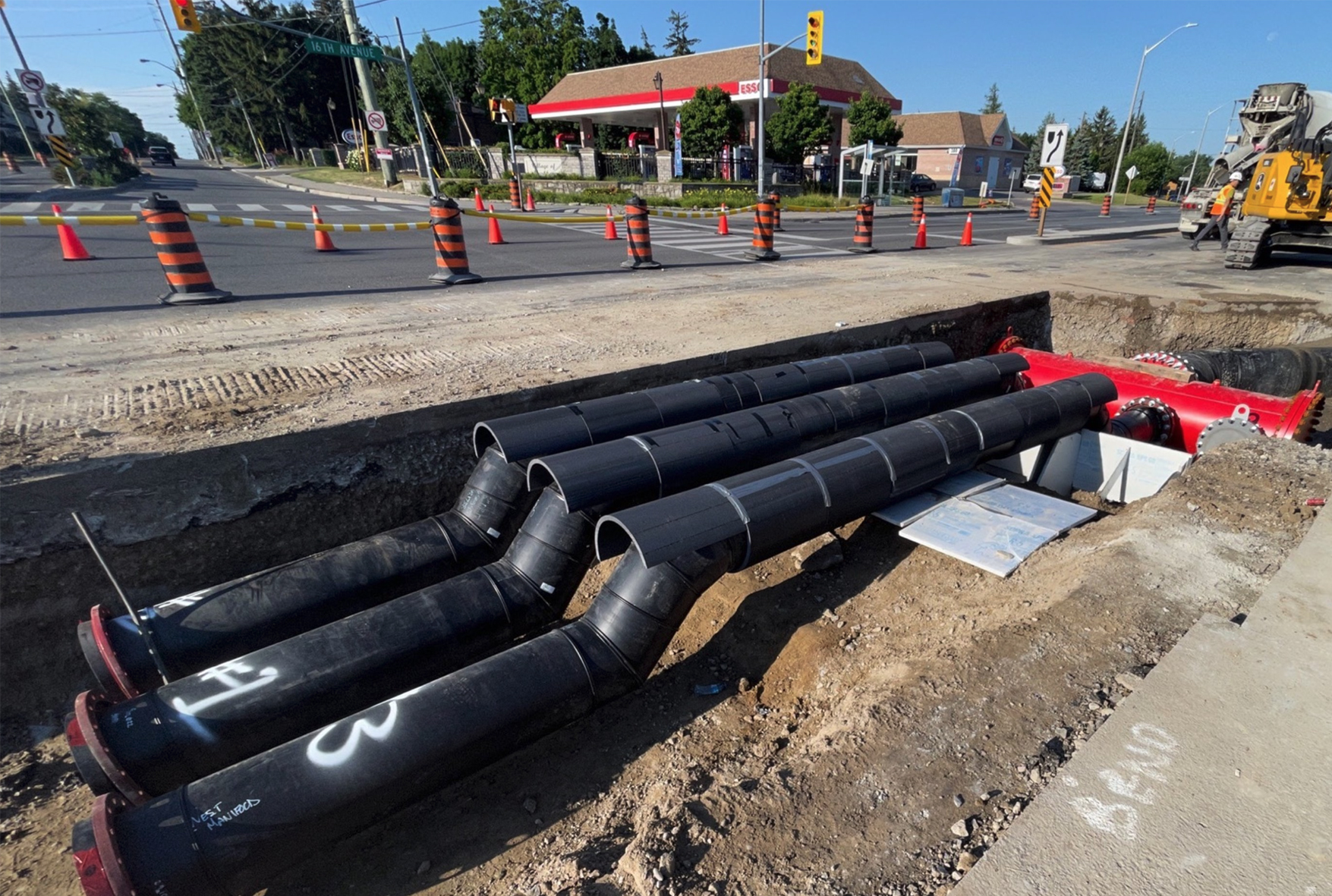
Brief Overview:
To address the York Durham Trunk Sanitary Sewer (YDSS) nearing its capacity, a bypass sewer was proposed, tying into the North Don Collector Trunk as a short-term solution.
Despite the challenges posed by a highly developed area with numerous buried utilities, a $62,000 Subsurface Utility Engineering (SUE) study conducted at 30% design completion revealed that a 16-inch sewer crossing was deeper than initially recorded, eliminating the need for costly relocation and resulting in an estimated saving of $123,000, showcasing a benefit-cost ratio of approximately 2 to 1.
Full Case Study Report:
The York Durham Trunk Sanitary Sewer (YDSS) was reaching its design capacity, and it was decided, as a short term solution, to construct a bypass sanitary sewer that will parallel the existing line, tying into the North Don Collector Trunk.
The area is highly developed and served by a dense network of buried utilities. Furthermore, the design team enjoyed little flexibility due to the need to accommodate the existing inverts of the upstream and downstream connections and several known crossings by other ongrade sewer lines.
The consultant performed SUE levels ‘D’ and ’C’ investigations, and hired a specialized subcontractor to perform QL-B and QL-A studies at critical locations. The SUE investigation was conducted when the design was 30% completed.
All utilities within the right of-way of the proposed sewer bypass were designated along with 39 test holes constructed to confirm the accurate depth of utility at locations of potential conflicts.
The main finding was that a 16-in. sewer crossing the proposed line was 8-in. deeper than originally indicated by the records, eliminating the need for its relocation.
The SUE study cost $62,000, and resulted in an estimated saving of $123,000 (University of Toronto estimate), or a benefit-cost of approximately 2.
Related Keywords:
Downtown areas/suburbs, Eliminated need for utility relocation, Benefit/cost, direct, Savings, Inaccurate (wrong location/depth of shown utilities), Test holes (QL-A), Surface geophysical techniques (QL-B), Above ground objects, surveying of (QL-C), Existing records, review of (QL-D)
